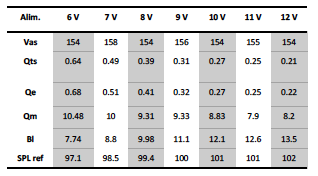Yes, my limited understanding of excursion is out and back. But I thought there was terminology about how quickly a speaker returns to its default state. Brad or Bill may know.
Hi,
The ability of a cone to return to its starting position is basically a function of the weight of the cone itself (hence why say the vintage doped paper cones are so light versus a cone made of carbon or plastic), the force of the motor (that is the magnetic force induced by the motor on the cone) - again the vintage drivers use very powerful alnico or field coil magnets typically, the x max which is the distance that the cone is able to move in this “system” (usually very low in vintage designs) and the stiffness of the suspension of the cone - the vintage drivers often use quite stiff suspension made from impregnated / doped fabric or even leather versus a modern floppier rubber.
Best.







